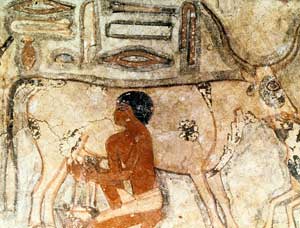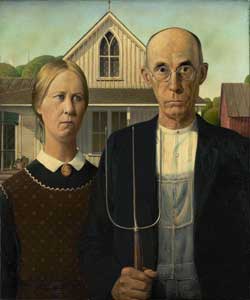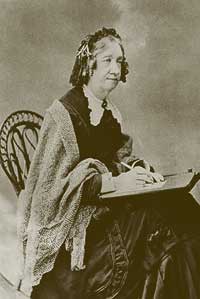By Lance Dalleck, Ph.D.
As we move forward through the 21st century, one of the greatest accomplishments to be celebrated is the continuous pursuit of fitness since the beginning of man’s existence. Throughout prehistoric time, man’s quest for fitness was driven by a desire to survive through hunting and gathering. Today, though no longer driven by subsistence requirements, fitness remains paramount to our health and well-being.
Join the conversation!
What do you think of these milestones and influential people in the history of fitness? Are you surprised to learn that the importance of exercise was recognized hundreds and even thousands of years ago? What do you think the future of fitness holds?
Did you know that some of our basic fitness principles originated more than 5,000 years ago? And you may be surprised to learn how events like wars and inventions like the computer have influenced our fitness knowledge and practices. Here in part 1, we highlight the first 25 notable events, people and trends that have shaped the history of fitness, beginning with primitive man up to some well-known (along with a few unsung) figures of the twentieth century.
1. The Primitive Hunter-gatherer (pre-10,000 BC)
Primitive nomadic lifestyles required the continuous hunting and gathering of food for survival. Tribes commonly went on one- or two-day hunting journeys for food and water. Regular activity apart from that necessary for hunting and gathering was also a principal component of life. Following successful hunting and gathering excursions, celebration events included trips of six to 20 miles to neighboring tribes, where dancing and cultural games could often last several hours. This Paleolithic pattern of subsistence pursuit and celebration, demanding a high level of fitness and consisting of various forms of physical activity, defined human life.
2. The Neolithic Agricultural Revolution (10,000 to 8,000 BC)

This event, occurring between 10,000 and 8,000 BC, marked the conclusion of a primitive lifestyle and marked the dawn of civilization. The Neolithic Agricultural Revolution was highlighted by many important agricultural developments, including animal and plant domestication and the invention of the plow. These advancements permitted hunter-gatherer tribes to obtain vast amounts of food while remaining in the same area, thus transforming primitive man into a primarily agricultural and farming society. This event led to the beginning of a more sedentary lifestyle. Although man had alleviated some of the hardships of their primitive lifestyle, agricultural developments also resulted in decreased daily physical activity.
3. Yoga (3000 BC)
Yoga was originally developed by Hindu priests in India 5000 years ago. Through observing and mimicking the movement and patterns of animals, priests hoped to achieve the same balance with nature that animals seemed to possess. This aspect of yoga, known as hatha yoga, is the form with which Westerners are most familiar and is defined by a series of exercises involving physical postures and breathing patterns. Ancient Indian philosophers also recognized the health benefits of yoga, which include proper organ functioning and well-being. Today, nearly 16 million Americans regularly participate in yoga for these same benefits.
4. Ancient Greek Civilization (2500 to 200 BC)
Arguably, no other people throughout history held fitness in such high regard as the ancient Greeks; the idealism of physical perfection was one that embodied ancient Greek civilization. The appreciation for beauty of the body and the importance of fitness throughout society is one that is unparalleled in history. The Greeks believed that development of the body was just as important as development of the mind. Physical well-being was necessary for mental well-being, with the need for a strong, healthy body to harbor a sound mind. Many founding medical practitioners facilitated the growth of fitness throughout ancient Greece, including Herodicus and Hippocrates.
5. Gymnastics in Ancient Greece (2500 to 200 BC)
A common saying among ancient Greeks was “exercise for the body and music for the soul.” Gymnastics was considered to be one the most important classroom topics. Gymnastics took place in palaestras—a physical-education facility for young boys. The palaestra consisted of an indoor facility for gymnastics, in addition to an outdoor area for running, jumping and wrestling. Upon reaching adulthood, typically between the ages of 14 and 16, the site for fitness training switched from palaestras to gymnasiums. Exercise in the palaestra and gymnasium was supervised by the paidotribe, who could be compared to a modern-day personal trainer.
6. Sushruta (800 BC)

The ancient Indian physician Sushruta is widely recognized as “The Father of Surgery.” Besides his numerous contributions to the science of surgery, nearly two millennia ago Sushruta would be among the first historical figures to understand the relationship between physical inactivity and poor health. Sushruta recognized a sedentary lifestyle was associated with obesity and type 2 diabetes; in fact, he prescribed exercise for his patients with these conditions to minimize the consequences. Sushruta advocated for exercise of moderate intensity on a daily basis; these recommendations are remarkably similar to the current public-health guidelines for physical activity.
7. Rise of the Persian Empire (550 to 330 BC)
Leaders within early civilizations recognized the important relationship between fitness and overall performance of military forces. One of the best examples of a civilization utilizing fitness for military purposes is the Persian Empire. Persian leaders demanded strict physical fitness from its people, which was accomplished through the implementation of rigid training programs. At the age of six, boys became property of the Empire and underwent training. Fitness training was not intended for health benefits, but rather to create fit soldiers to expand the Empire. At its height, the Persian Empire, with its emphasis on high fitness, eventually encompassed all of the Near East.
8. Confucius (500 BC)
In China, the philosophical teachings of Confucius emphasized fitness and provided encouragement for participation in regular physical activity. It was recognized that physical inactivity was associated with certain diseases that were thought to be preventable with regular exercise for fitness. These unhealthy conditions included organ malfunctions and internal stoppages, which sound eerily similar to modern-day heart disease and diabetes. Consequently, Cong Fu gymnastics was developed to keep the body in good, working condition. Cong Fu exercise programs consisted of various stances and movements, characterized by separate foot positions and imitations of different animal fighting styles.
9. The Dark and Middle Ages (476 to 1400)
The crumbling of the Roman Empire, conquered by Barbarians from Northern Europe, represented the onset of a millennium of intellectual standstill. However, these occurrences were beneficial with respect to fitness. The lavish lifestyles of the Romans had resulted in a dramatic deterioration of the society’s fitness level. The barbaric tribes from Northern Europe possessed similar characteristics to primitive people. Their lifestyle consisted of hunting and gathering food, and tending to cattle. Accordingly, fitness was a prerequisite for survival. In short, despite cultural setbacks that occurred with the fall of the Roman Empire, fitness experienced an important revival during the Dark and Middle Ages.
10. Nationalism in Europe (1700 to 1850)
Intense feelings for nationalism and independence across Europe throughout the National Period (1700−1850) resulted in a significant fitness movement, which came in the form of gymnastics programs. Tremendous growth of gymnastics took place in Germany and was attributable to the work of Friedrich Jahn, who earned the title “Father of German Gymnastics.” It was early during Jahn's lifetime that Napoleon conquered much of Europe, including Germany. Jahn's passion for German independence became the driving force behind his creation of gymnastic programs. He believed future susceptibility to foreign invasion could be prevented through the physical development of the German people.
11. Colonial America (1700s)

Hardships of colonial life in early-day America ensured that fitness was a priority; however, during this time period no formal exercise or regular physical-activity programs existed. Colonial America remained an undeveloped country characterized by vast unexplored land and wilderness. Lifestyles during this era consisted largely of plowing the land for crops, hunting for food and herding cattle. This rigorous lifestyle provided sufficient levels of physical activity with no additional need or demand for exercise to maintain fitness levels.
12. Per Henrik Ling (1800s)
In the early 1800s in Sweden, physical therapist Per Henrik Ling developed and introduced a variety of gymnastic programs to citizens of his country. Ling, who had a strong medical background, understood that exercise was necessary for all persons; he also recognized that exercise programs should be planned based on individual differences. Accordingly, his gymnastic programs were designed to adhere to this important training principle and included educational gymnastics, military gymnastics and medical gymnastics. Ling also believed physical educators must possess knowledge of the effects of exercise on the human body. Ling used science and physiology to better understand the importance of fitness.
13. Archibald Maclaren (1800s)
In Great Britain during the mid-1800s, medical student Archibald Maclaren was a major proponent of fitness. Marclaren made numerous observations based on his work that were remarkably similar to present-day recommendations. Marclaren believed the cure for weariness and stress was physical action. He also noted recreational exercise found in games and sport was not sufficient for attaining adequate fitness levels. Moreover, Marclaren recognized that both growing boys and girls required regular physical exercise. Lastly, Marclaren understood the need for individual variation in fitness-training programs and he also documented the importance of exercise progression.
14. Catherine Beecher (1800s)

Catherine Beecher was an American educator throughout the 1800s. She was a strong advocate for inclusion of physical education in the school curriculum. Beecher also specifically devised fitness programs to meet the needs of women. Among her many different programs was a system of calisthenics performed to music. Though not formally recognized in name, Beecher’s programs of the mid-nineteenth century bear remarkable similarities to modern-day aerobics.
15. The American Industrial Revolution (1850 to 1870)
This event, occurring from 1850 to 1870, resulted in widespread changes throughout America. Technological advancements meant labor-intensive jobs were replaced. Rural life transitioned to an urban lifestyle, which generally required less movement and physical work. At the turn of the 20th century, common causes of death were from influenza, polio and other infectious diseases, which were alleviated with the discovery of penicillin in 1928. The true burden of industrialization would begin to be felt in the 1960s. Hypokinetic diseases, including cardiovascular disease and type 2 diabetes, which were never before prevalent, began to be recognized as the leading causes of morbidity and mortality.
16. YMCA/YWCA Formation (mid-1800s)The first Young Men’s Christian Association (YMCA) within America was organized on December 15, 1851, in Boston; seven years later the first Young Women’s Christian Association (YWCA) was formed. Although both organizations have had a strong Christian focus throughout their rich histories, in more recent decades each establishment has also afforded its members various avenues through which individual fitness goals could be pursued, including both individual and group fitness activities and numerous sporting opportunities. With a combined membership of well over 50 million worldwide, it could be argued that more people have exercised at “the Y” than at any other fitness-related facility.
17. Dioclesian Lewis (1800s)German immigrants migrating across the Atlantic brought many aspects of their heritage to the United States, including gymnastics. However, gymnastics did not gain the same level of popularity in America, in large part because the constant threats to independence and nationalism from foreign invasion were dynamics prevalent in Europe and not the United States. Dioclesian Lewis felt many German gymnastic exercises could not be performed by populations other than young, fit men. Accordingly, he developed a new system of exercises designed to meet the individual requirements of numerous populations, including young and old, obese and deconditioned, and girls and women.
18. World War I (1914 to 1918)The United States entered World War I in 1917. Upon entry into the global conflict it became paramount for hundreds of thousands of citizens to be drafted and trained for combat. At the end of the war, statistics were released from the draft with disturbing data regarding fitness levels. It was found that one out of every three drafted individuals was unfit for combat and many of those drafted were highly unfit prior to military training. Concern over these low fitness levels resulted in legislation being passed that ordered the improvement of physical-education programs within public schools.
19. World War II (1939 to 1945)The modern fitness movement evolved out of the influence of World War II and the subsequent development of the Cold War. The United States’ entry into World War II in 1941 brought with it the necessity to draft military personnel. However, as more men were drafted, it became clear that many of them were not fit for combat. After the war it was reported that nearly half of all draftees needed to be rejected or were given non-combat positions. These disturbing statistics helped gain the attention of the country with regards to the importance of fitness.
20. Jack LaLanne (1950s)

Jack LaLanne began his life-long career of promoting fitness during the Great Depression. Throughout his life, LaLanne preached the value of preventive lifestyle habits. In the 1950s, The Jack LaLanne Show began airing on television, preceding the appearance of Richard Simmons and Jane Fonda by 25 years. LaLanne developed fitness programs including aerobics, water aerobics and resistance exercise. He also introduced numerous pieces of exercise equipment, including the first cable-pulley machine, the Smith machine and the first leg-extension machine. Though LaLanne preceded the modern fitness movement by some three decades, his fitness ideology and programs were largely valid when judged by modern research.
21. Publication of the Kraus-Hirschland Study (1950s)In a 1954 study published by Kraus and Hirschland, it was reported that nearly 60 percent of American children failed at least one of a battery of muscle strength and flexibility assessments; comparatively, only 9 percent of European children failed one of these tests. In the midst of the Cold War era, these findings would alarm American politicians to such an extent that action was taken. Ultimately, in 1956 President Dwight Eisenhower would form the President’s Council on Youth Fitness in an effort to better promote fitness levels among the nation’s youth.
22. Invention of the Computer (1950s)

Much like previous technological advancements made by mankind throughout history, the invention of the computer in the middle of the 20th century has had a profound and long-lasting negative impact on fitness. It has been estimated that the average American spends up to eight hours per day sitting in front of the computer screen. Since the advent of the computer, prevalence rates for various chronic diseases, including obesity, have skyrocketed. Currently, 68 percent of American adults are either overweight or obese; moreover, the prevalence of obesity in youth has risen five-fold in the last 40 years.
23. Jeremy Morris (1950s)
In the early 1950s, Jeremy Morris first reported to a skeptical medical community that the risk of heart attack was higher in bus drivers who spent the day sitting compared to conductors who spent the day going up and down the stairs of double-decker buses. He also reported similar findings in postal workers; those individuals who delivered mail on foot or by bicycle had a reduced risk for heart attacks compared to their counterparts who spent most of the workday sitting behind a counter. Morris was the first individual to provide scientific data supporting the notion that sitting too much is hazardous to one’s health.
24. T.K. Cureton (1950s)
Important contributions to fitness were made throughout the 1940s and 1950s by Dr. Thomas K. Cureton at the University of Illinois. Cureton not only recognized the numerous benefits of regular exercise, he strived to expand the body of fitness knowledge with the application of modern research techniques. He wanted to answer questions such as how much exercise was healthy and what types of exercise were most effective. Perhaps most importantly, Cureton wanted to know how fitness could best be measured within an individual. Among his most important contributions was developing fitness tests for cardiorespiratory fitness, muscular strength and flexibility.
25. John F. Kennedy (1960s)
Former President John F. Kennedy once asserted that “physical fitness is the basis for all other forms of excellence.” Throughout his abbreviated but influential presidential term, Kennedy would be a strong advocate for the importance of fitness and its health-related benefits to the American people. In response to his observation that the United States was under-exercised as a nation, Kennedy prompted the federal government to become more involved in national fitness promotion. These efforts resulted in continued development of the President’s Council on Youth Fitness started by his predecessor, President Eisenhower.
Look for Part 2 of this series—and the most recent 25 trends, milestones and people who have influenced the world of fitness as we know it—in the next issue of ACE Certified News.
________________________________________________________________________

Lance C. Dalleck, Ph.D., is academic coordinator of the Cardiac Rehabilitation postgraduate program at the University of Auckland in New Zealand. His research interests include improving exercise performance and health outcomes through evidence-based practice, quantifying the energy expenditure of outdoor and non-traditional types of physical activity, and studying historical perspectives in health, fitness and exercise physiology.